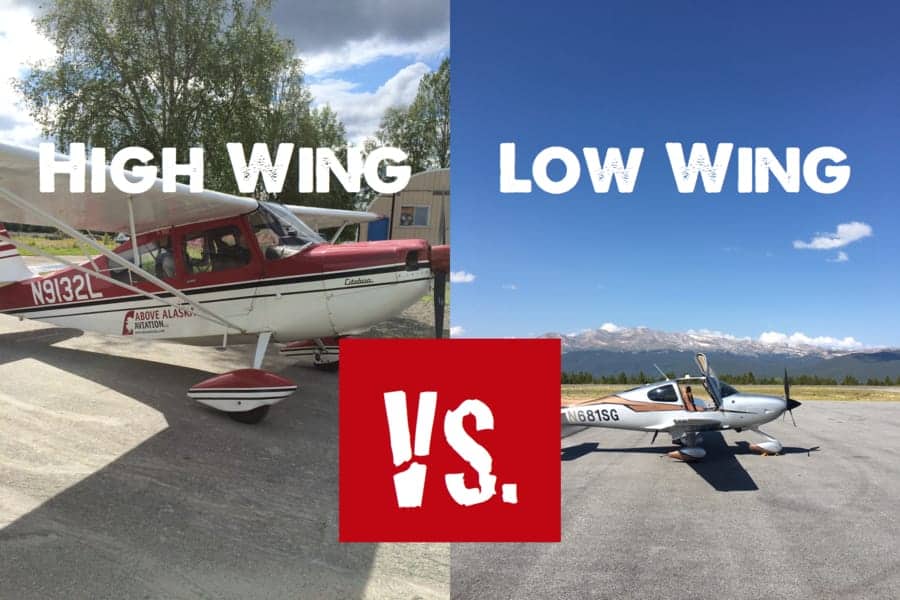
The distinctions between high and low wing airplanes are, visually, obvious. High wing aircraft place the wing above the fuselage, the main body of the aircraft, while low wing aircraft place the wing below the fuselage.
Both configurations offer advantages and disadvantages and the selection of either configuration is a choice made by the engineering teams building the aircraft very early in the design process to satisfy the required performance requirements for the aircraft. What are the differences between High Wing and Low Wing aircraft?
Each wing configuration is beneficial in its unique way for training, performance, maintenance, and everyday use. High wing aircraft are generally less aerodynamic, slightly easier to train in for the new pilot, and easier to access for routine maintenance than low wing aircraft.
Because there is no “right” answer, comparing high wing designs to low wing designs is fundamentally an expression of balancing the needs of the pilot or operator. There are many implications of choosing a high or low wing aircraft, and so it’s important to think through all of them when deciding which is best for your situation.
Aerodynamics
Aircraft configuration is initially focused on aerodynamics. The location, size and shape of the wing, tail and fuselage determine the fundamental handling characteristics of the aircraft. For high and low wing aircraft, major differences will occur in the following regimes: lateral (roll) stability, low speed handling characteristics, and general aircraft performance (cruise speed, takeoff and landing distances etc.).
As a thought exercise, consider two tricycle gear designs with the same weight, length, wing shape, airfoil, tail and engine, one with the wing above the fuselage and one with the wing below the fuselage.
Roll Characteristics
First consider lateral stability, or roll characteristics. For the high wing aircraft, the center of gravity sits below the wing, meaning the fuselage of the aircraft acts as a pendulum to increase roll stability relative to the low wing aircraft, whose center of gravity is balanced above the wing.
For the high wing aircraft, there will be relatively less tendency to enter an unstable spiral descent, but the aileron forces will be higher to complete a rolling maneuver.
This is a desirable effect for aircraft intended to fly in instrument flight conditions for long periods of time with low pilot workload. However, this tendency is a detriment to an aerobatic show plane designed for high roll rates and rapid roll maneuvers, and can lead to a sense of “heaviness” in the ailerons for more typical cruising airplanes.
Landing Characteristics
Consider next low speed handling characteristics, particularly landing and stall characteristics. During the landing flare, the low wing aircraft will enter ground effect slightly before the high wing aircraft and will experience a larger reduction in drag for the same height above the ground.
The stronger ground effect during the flare will cause the low wing aircraft to “float” more readily than the high wing aircraft, which, a characteristic that, when used skillfully, helps to soften the touchdown. But this same ground effect can encourage ballooning during the flare, and may make precise landings more difficult to accomplish.
The high wing aircraft will still experience ground effect, but because the wing is several feet farther from the runway, the total effect on the aircraft is greatly reduced, as ground effect decreases exponentially with difference from the runway surface. The high wing aircraft thus may be capable of shorter landing distances, as it “punches” through ground effect more easily.
Stall Characteristics
Stall characteristics are also of concern in the low speed handling regime. Assuming the aircraft’s horizontal tail is mounted at or near the bottom of the fuselage, the high wing aircraft’s turbulence from the wing at high angles of attack may be more likely to interfere with the aircraft’s tail. This wake interference is dependent on flap position and a number of other design factors; however, two primary effects can be surmised.
The high wing aircraft is more likely to encounter a strong buffeting effect near stall deterring the pilot from slowing further. The interference of the wing with the tail may decrease the effectiveness of the elevator due to the effect of “downwash.”
The downwash effect, in production aircraft is highly dependent on specific design criteria, but ultimately this effect reduces the angle of attack on the horizontal tail, reducing elevator effectiveness.
With stronger pre-stall buffet and decreased elevator effectiveness the high wing aircraft will exhibit stall characteristics in pitch that both discourage stall entry and increase the pilot effort required to achieve stall. The low wing aircraft in contrast will exhibit stall characteristics in pitch that provide less warning to the pilot of impending stall.
Cruise Characteristics
Finally, aircraft performance in takeoff, cruise and landing may all be affected by wing location. High wing aircraft will face an increase in “profile drag” and “interference drag,” that particularly effect cruise performance.
Profile drag is drag resulting air simply impacting the front of the aircraft, and interference drag is the drag resulting from airflow interacting with the various corners, nooks and crannies present on an aircraft.
Consider the location of the landing gear on the low wing example aircraft; they are attached directly to the wing with minimal additional structure or fairings required to create an efficient aerodynamic shape. In contrast, the high wing aircraft will either attach the landing gear to the wing, which is heavy and structurally dubious, or to the fuselage.
In either design choice for the landing gear, the high wing aircraft will have more “stuff” hanging from the aircraft when compared with the low wing aircraft. Should the high wing aircraft also require a strut to strengthen the wing, it becomes obvious that the high wing aircraft creates more profile and interference drag compared to the low wing aircraft.
The lower drag profile of the low wing aircraft yields greater cruise performance relative to the high wing design; the result is higher true airspeeds and or lower cruise fuel burns.
Takeoff Performance
Takeoff performance and landing performance face impacts from the ground effect issues discussed previously. Considering first the takeoff, the low wing aircraft will benefit from a shorter ground roll and obstacle clearance distance.
Because the tip vortices will be interrupted in ground effect for slightly longer the aircraft develops slightly more lift and thus a slightly steeper climb gradient. This ground effect results in longer landing distances for precisely the same reason.
The low wing configuration results in longer landing air distances, where air distance is the horizontal distance traveled between 50 feet above touch down to the touchdown point.
Overall Aerodynamics
Based on the thought experiment above, it seems that low wing aircraft generally hold more advantages aerodynamically than high wing aircraft. But it is important to note that the exercise above does not consider the effect of a tailwheel configuration, or allow for the use of differing airfoils, wing shapes etc.
The aerodynamicists that design real world aircraft make choices that dramatically affect aircraft stability, control characteristics, stall characteristics, cruise performance and takeoff and landing distances.
Real world aircraft are generally only comparable relative to one another holistically, rather than being comparable relative to their wing position. Therefore there are few absolute conclusions to be drawn between production aircraft, but the concepts in this thought experiment highlight some of the considerations in play during the initial design process for a new aircraft.
Flight Training
Are high wing aircraft or low wing aircraft better for initial pilot training? In practical terms for student pilots it does not matter. Student pilots should be more concerned with locating a competent instructor, a quality flight school, a well maintained aircraft that fit within their budget and time constraints.
As alluded to in the conclusion of the thought experiment above, the individual design characteristics of specific aircraft have significantly more dramatic impacts on the fundamental flying characteristics of that aircraft type.
In general, there are three issues that student pilots should be aware of when comparing high wing and low wing aircraft: Ingress/Egress, visibility, and landing characteristics.
Ingress/Egress in High Wing vs. Low Wing
Most low wing aircraft used in the flight training environment feature a single door on the right-hand side of the fuselage. The most common of these types of aircraft will be the Piper Cherokee family aircraft.
Entering the aircraft will require the student to slide across the seats prior to entry by the flight instructor, if ease of entry is important, squeezing between the seats and the flight controls may prove challenging.
Additionally there is no protection from rain or sun while loading the aircraft.
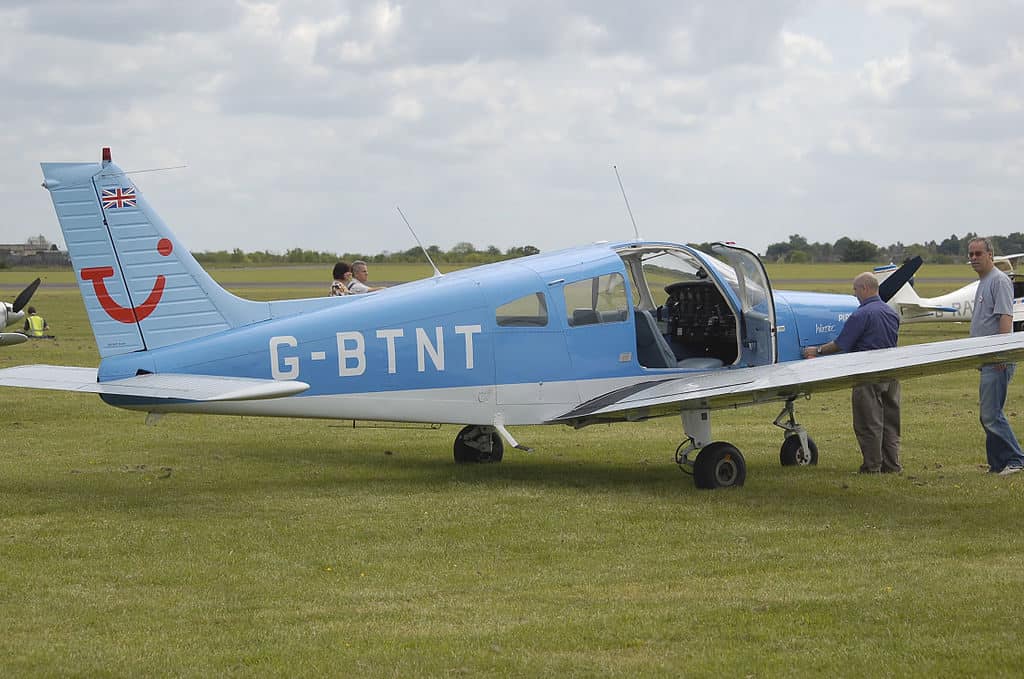
A handful of sliding or tilting canopy training aircraft also exist in the global flight training fleet, the Diamond DA40/42 series and Grumman American series of aircraft are good example of this type of low wing ingress/egress system. The moving canopy system allows the instructor and student to enter the aircraft independently, but some maneuvering and careful foot work is required to avoid trampling the upholstery.
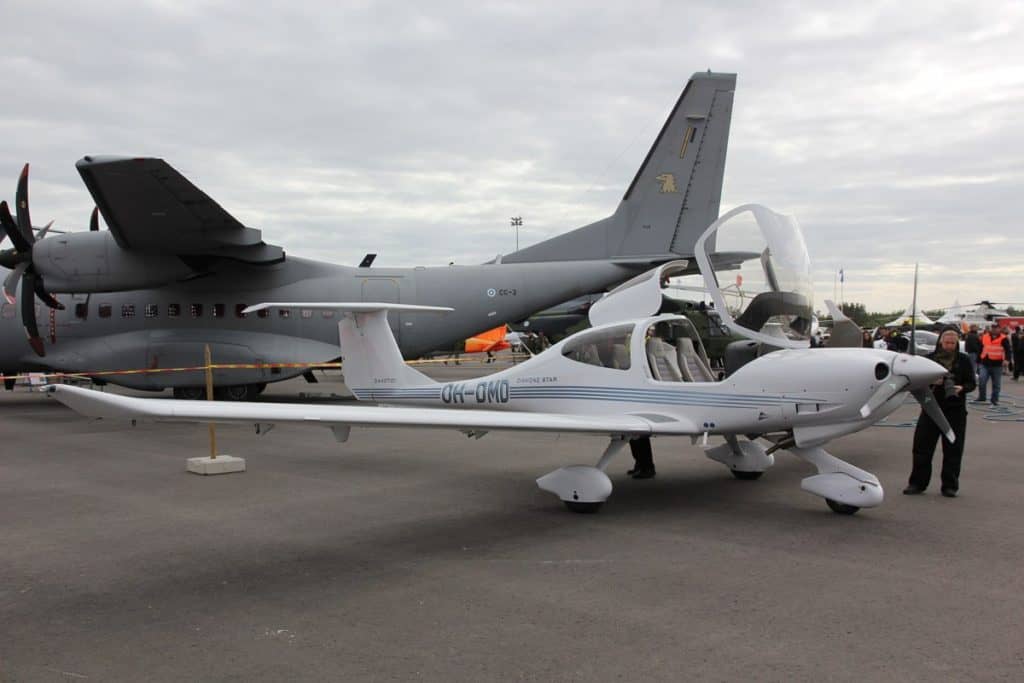
Common high wing training aircraft are nearly universally the Cessna 172 family of aircraft. These aircraft have left and right doors to allow ingress and egress to both the front and rear seats from either the left and right hand side. Additionally the high wing position provides some shade and shelter from sun and rain during loading and preflight.
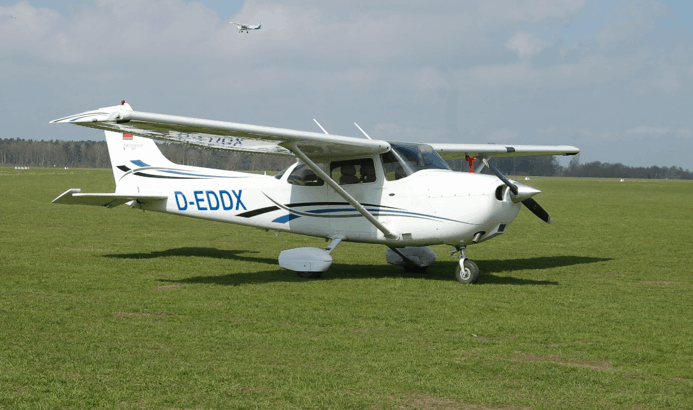
Visibility of High Wing vs. Low Wing
Good outside visibility is an often-underappreciated aspect of selecting a training aircraft. A number of training maneuvers require student pilots to visually track a point on the ground and all pilots should be constantly scanning for traffic, particularly when maneuvering in busy, crowded training areas.
High wing aircraft offer the advantage of excellent downward visibility, which is useful during landing practice and ground reference maneuver training.
By contrast, low wing aircraft offer a less restricted upward and forward visibility, which helps to simplify traffic scans. Pilots must learn to compensate for the “blind spots” inherent to the high or low wing configuration they are flying.
Landing Characteristics for Student Pilots in High Wing vs. Low Wing
The most dramatic difference for new students between high and low wing aircraft configurations will be experienced while learning to land. As discussed above, low wing aircraft are more prone to floating and ballooning in ground effect during the roundout and flare when compared to high wing aircraft.
Skilled pilots can use this effect to their benefit, but student pilots may find it more difficult to become proficient at short field, maximum performance landing techniques. Prolonged time in the flare attitude may also make crosswind landing techniques more difficult to master, as the additional exposure to changing winds and airspeeds requires additional finesse at touchdown.
This tendency to float in the flare requires precise airspeed control to ensure the aircraft settles through ground effect and touches down at the intended point. High wing aircraft by contrast will settle more easily during the landing flare, but this comes at the risk that approaches at too low of an airspeed do not benefit from the ground effect “cushion” to salvage a hard landing.
The high wing aircraft also has additional margin for using bank angle during crosswind approaches to manage runway drift in a slipping approach to land. Both high wind and low wing aircraft configurations present unique challenges, but neither is inherently easier or more difficult to learn to land.
Everyday Flying
Perhaps the most consequential aspects of comparing low wing and high wing aircraft pertain to everyday, normal routine task issues. Preflight, postflight, loading, unloading, cabin size, operating facilities, and so on all comprise aspects of “living with” a high wing or low wing aircraft. Which of these aspects are positives or negatives is dependent on the primary use of the aircraft, and so there is again, no one right answer for all pilots.
Preflight and Post-Flight Process
The preflight and post-flight process is generally comparable, regardless of where the wing is mounted. Pilots look to see that the various aircraft components are undamaged, the engine, fuel and oil systems are in good working order and that there are no obvious signs of damage. Wing location does complicate or simplify some of these tasks.
The most obvious differences in preflight and post-flight for high and low wing aircraft are; sumping fuel to check for contaminants, inspecting landing gear and inspecting the flaps and ailerons.
High wing aircraft have the advantage of allowing the pilot to walk under the wing in relative comfort to access fuel drains, flap and aileron hinges and actuators, and the landing gear. Low wing aircraft require pilots to crouch, and even crawl beneath the aircraft in order to examine these components.
For some pilots, additional difficulty in conducting these preflight actions means insufficient attention may be applied to examining the aircraft in flight, intentional or otherwise.
Loading Passengers
Having touched on ingress and egress of high and low wing aircraft in the training environment previously, it is worth considering the process of loading passengers and cargo from high and low wing aircraft.
High wing aircraft with rear cargo doors tend to place the door near or even under the trailing edge of the wing; this may make loading bulky or heavy cargo more challenging as compared with a low wing aircraft where the wing’s trailing edge does not interfere with cargo loading.
Good examples of this are the Beechcraft A36/G36 and the Cessna 206. Both aircraft offer cargo doors for rear cargo and passenger access, but the low wing Beech Bonanza does have the advantage of easier cargo access.

Image credit: AvProJets.com

Cabin Space
Cabin space may also be affected by the location of the wing. To continue the comparison between the A36/G36 Bonanza and the 206 Stationair, the Bonanza has more restricted head and shoulder room as a result of the tapering upper fuselage, while the Stationair retains a squared off upper fuselage due to the high wing configuration.
Depending on the intended mission of the aircraft, either configuration may serve equally well, but it is a factor to consider when comparing the two aircraft.
If raw interior volume is critical, the squared off proportions of many high wing aircraft, for example the Cessna 208B Caravan, maximizes volumetric efficiency. But if raw speed is a more valuable design or mission goal, the closely shaped finely tuned and narrow lines of the Piper M600 series aircraft may be more appropriate, despite reduced interior volume.
Once again, the ultimate mission of the aircraft impacts cabin volume requirements, and thus biases for or against a high wing or low wing configuration depending on the mission requirements.

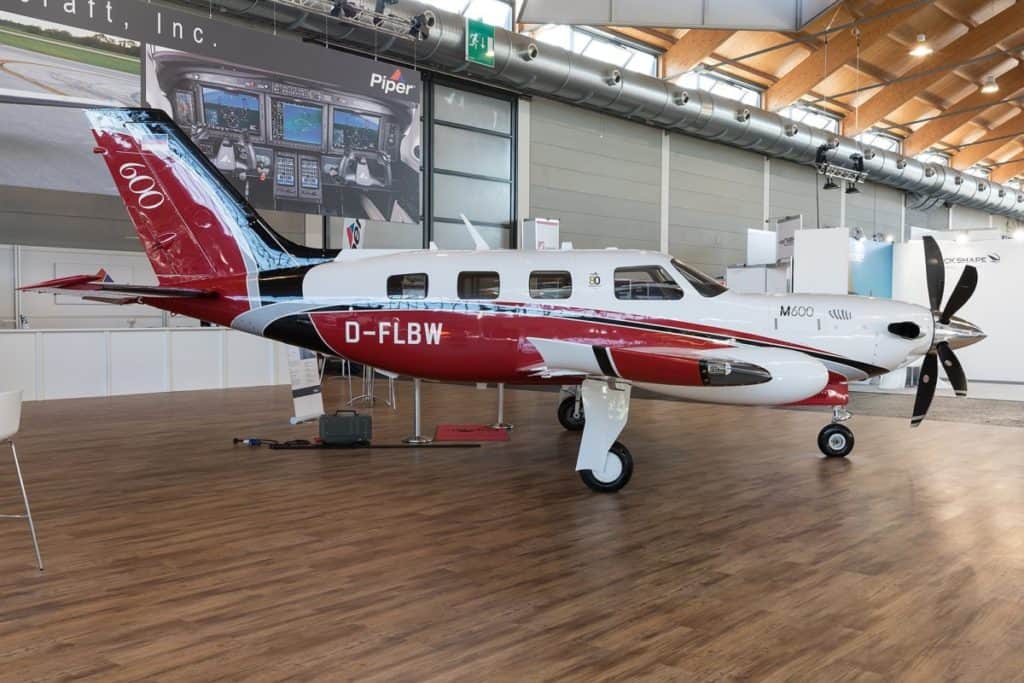
Operating Conditions
Operating conditions and facilities also play a role in biasing the advantages and disadvantages of high and low wing aircraft. The most common and perhaps recognizable operating condition that drives a preference for a high wing is short runway backcountry flying.
Seemingly all of the backcountry optimized designs are high wing taildraggers that prioritize strong downward visibility, and large propeller clearances. High wing aircraft also have the advantage of moving the wing away from tires that may sling mud, rocks and gravel into fabric wings and paint.
To contrast the short and soft field advantages of high wing aircraft, low wing aircraft in the corporate aviation world dominate. The structural advantages of the low wing layout serve to maximize cabin volume and comfort in business aircraft.
For business aircraft, numerous aircraft systems are routed below the cabin floor or outside the pressure vessel to maximize the available cabin volume. Additionally the low wing configuration drives the engines to be located on the aft fuselage reducing the risk of foreign object debris ingestion. All of these design considerations help to maximize passenger comfort, the ultimate goal for business aircraft.
Maintenance
Normal maintenance actions for high wing and low wing aircraft are, largely, similar, particularly in the realm of small piston engine general aviation airplanes. Most maintenance activity is focused on the engine and electrical components located forward of the firewall, or within the instrument panel. In both of these cases, the location of the wing has little bearing. But when more substantial systems maintenance becomes necessary, there may be practical differences between low wing and high wing aircraft.
The differences in maintenance difficulty are ultimately a function of what type of maintenance needs to be performed and what kind of access is required.
Maintenance tasks requiring access to the underside of the wing will be less difficult and substantially easier on a high wing aircraft. But tasks that require jacking the aircraft off of its wheels result in substantially more unwieldy and cumbersome equipment to service the same high wing aircraft.
Access to wing systems is often accomplished from beneath the wing, thus the maintenance actions associated with those systems is determinant of the relative advantage or disadvantage of high wing or low wing aircraft. Similarly, retractable or fixed landing gear adds another variable to maintenance equation that may favor or disfavor a high wing or low wing aircraft configuration.
For prospective owners or operators, a thorough discussion of the various maintenance considerations specific to an aircraft type will be more relevant than the location of the wing itself. If a trusted mechanic does not have the jacking equipment to service the retractable gear system of the high wing Cessna products, an equally strong performing low wing aircraft may be more attractive as a purchase.
Maintenance is a fundamental aspect of aircraft ownership and operation, and if the low wing or high wing configuration is a major determinant of the difficulty of regular maintenance actions for a specific aircraft type, strong consideration should be given to the appropriateness of the aircraft for the desired or required missions, lest that maintenance requirement become a challenge to safe flight.
Which is Better, High Wing or Low Wing?
In short, neither aircraft configuration is fundamentally better than the other. The relative advantages or disadvantages of high and low wing aircraft exist in relationship to the requirements of the owner or operator, and the primary task the aircraft is used for.
This is borne out by examining the makeup of the various fleets of aircraft in use across different parts of the aviation world.
Airlines have largely standardized on low wing aircraft with engines slung beneath the wing; business aircraft are nearly universally of a low wing design with turbofans mounted on the aft fuselage, or turboprops mounted on the wings; the general aviation world is a mix of low and high wing aircraft, with the instantly recognizable high wing Cessna designs being as prolific as any other single manufacturer’s low wing products.
In each of these fleets, the operational dictates drive design choices and purchase decisions, with airlines standardizing to the infrastructure requirements of air carrier operations and business aviation taking advantage of the passenger comfort and systems design advantages of low wing aircraft, and the general aviation fleet expressing more individual requirements of each owner and operator.
The backcountry of Alaska and Idaho is dominated by Piper and Cessna high wing tail draggers, while the FBOs of south Florida are more likely to be home to sleek low wing Cirrus and Mooney and Beechcraft products.
Similarly, major pilot training organizations in the United States reflect organizational inertia to preferred and established relationships between the training organization and the various manufacturers rather than inherently superior high or low wing characteristics.
The aerodynamic design and performance requirements for specific aircraft have greater impacts on the overall differences between high and low wing designs. Designers attempt to produce specific characteristics for each model for speed, handling, payload, interior volume and more, as such the wing location is less critical than actual aerodynamic shapes and propulsion system selection.
The advantages and disadvantages of high and low wing aircraft exist in relationship to the broader performance capabilities and relevant practical considerations of the aircraft’s primary task. Therefore, the best high wing or low wing aircraft characteristics are a reflection of the aircraft’s specific mission.



